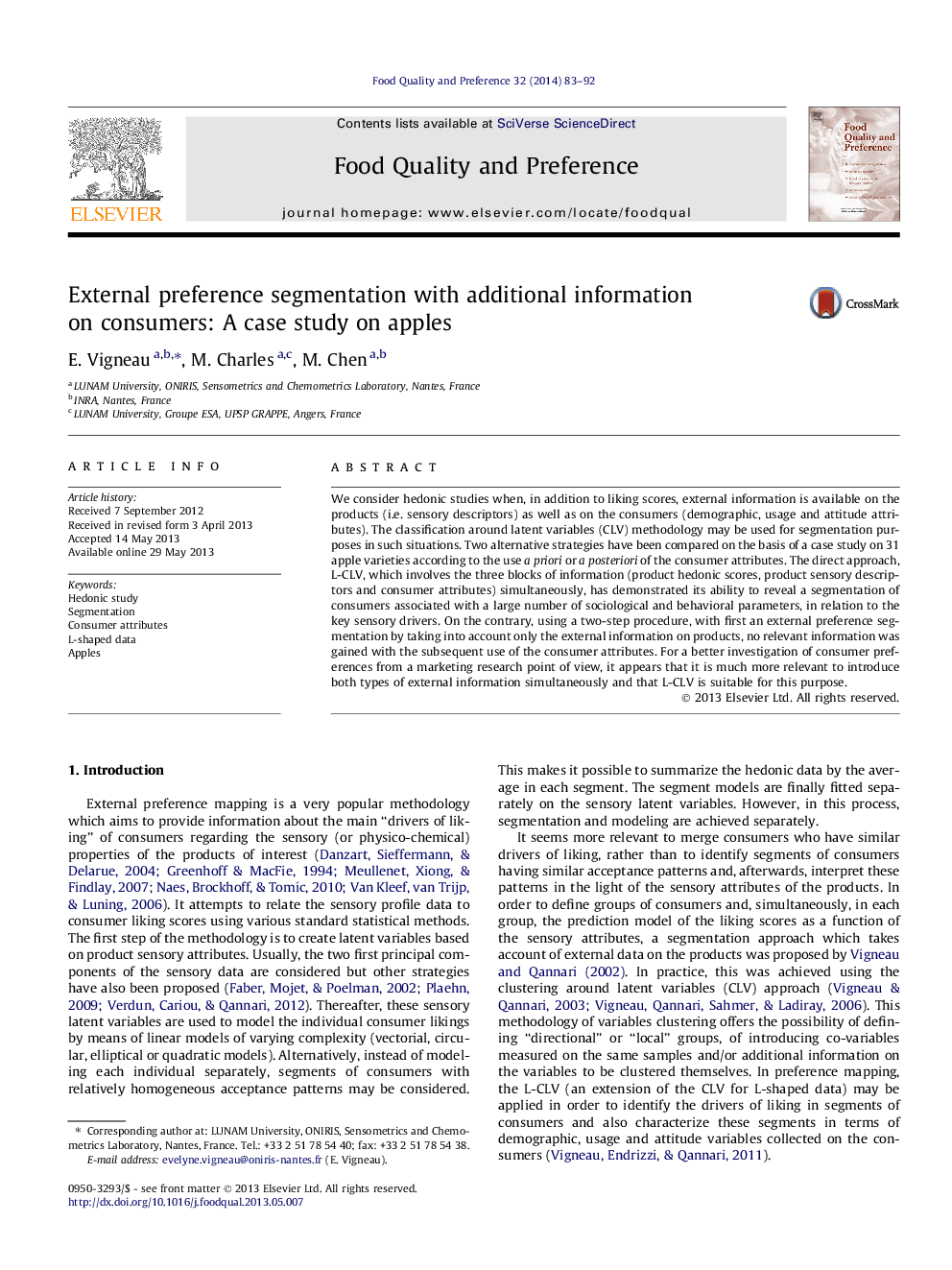| Article ID | Journal | Published Year | Pages | File Type |
|---|---|---|---|---|
| 4317172 | Food Quality and Preference | 2014 | 10 Pages |
We consider hedonic studies when, in addition to liking scores, external information is available on the products (i.e. sensory descriptors) as well as on the consumers (demographic, usage and attitude attributes). The classification around latent variables (CLV) methodology may be used for segmentation purposes in such situations. Two alternative strategies have been compared on the basis of a case study on 31 apple varieties according to the use a priori or a posteriori of the consumer attributes. The direct approach, L-CLV, which involves the three blocks of information (product hedonic scores, product sensory descriptors and consumer attributes) simultaneously, has demonstrated its ability to reveal a segmentation of consumers associated with a large number of sociological and behavioral parameters, in relation to the key sensory drivers. On the contrary, using a two-step procedure, with first an external preference segmentation by taking into account only the external information on products, no relevant information was gained with the subsequent use of the consumer attributes. For a better investigation of consumer preferences from a marketing research point of view, it appears that it is much more relevant to introduce both types of external information simultaneously and that L-CLV is suitable for this purpose.
